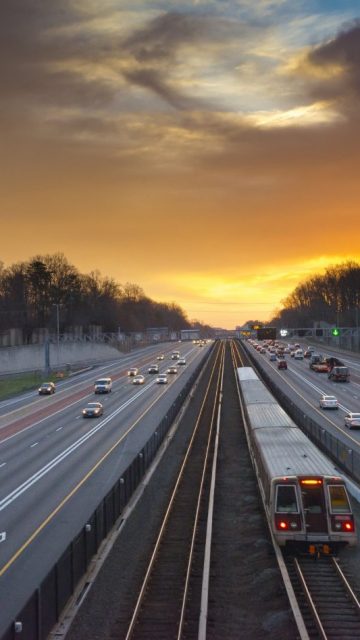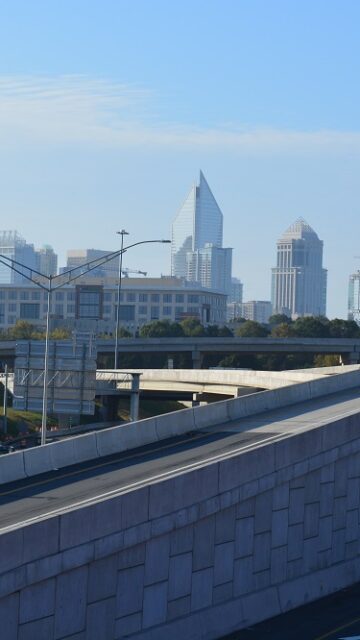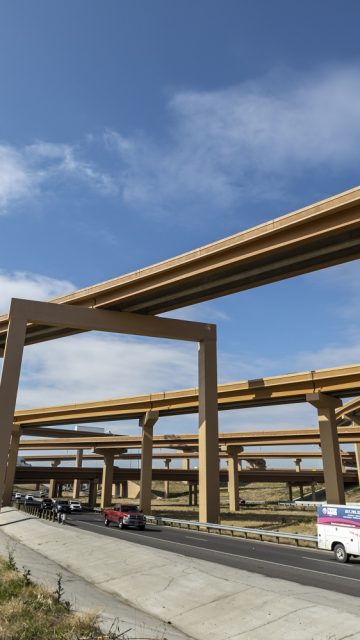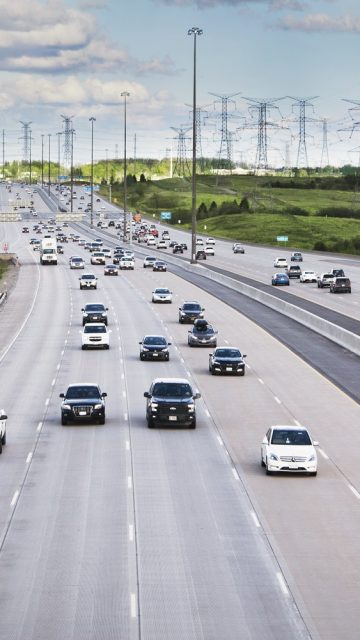

Dallas, United States
-
$2.2B
Total investment
-
13.3
Miles of length
-
2009-2061
Concession period
-
2015
Opening date
Construction, maintenance and management of a 13.3 mi section of the Lyndon B. Johnson (LBJ) Expressway.
The project was delivered in September 2015, after five years of construction, with zero infractions, fines or environmental penalties.
Ferrovial Construction | LBJ Express aerial view (2014)
Since it was built 40 years ago, the LBJ highway has become one of the most congested roads in the United States.
The extension project began towards the end of 2010 and was opened in September 2015, on budget and three months ahead of schedule, after five years of construction works with zero contingencies, fines or environmental penalties.
The new LBJ Express has increased the driving capacity of the old LBJ. Up to six new managed lanes have been added in the I-635 section, and four on the I-35 section. This extension aims to cover the needs arising through population growth over the next 30 years.
The most important reconstruction section of the I-635 within this project is the provision of two main interchanges (the I-35E and the North Dallas Tollway), 12 major overhead passes, six overhead passes for slip roads and a walkway for pedestrians (the Joe Ratliff Walkway).
Overall, works have comprised the building of a concrete structure the size of 120 football fields and a wearing surface equivalent to 280 fields, with the excavation of close to 7 million cubic meters of earth. Roughly, 62.13 mi of pilings have been used, while 205 mi of prefabricated beams and 320,000 m2 of different types of walls have been put up. The 9 lanes in each direction required the construction of over 217.5 mi of lanes, with one section of the highway having up to 28 lanes.
Innovative Funding in the US
This project was at the time the largest P3 (Private Public Partnership) to be developed in the U.S., before the I-66 Highway, and to date in the Southwest of the U.S.
Managed Lanes
This new infrastructure allows drivers to opt for using the free lanes for shorter trips, while ensuring more reliable driving times on the toll sections.
The LBJ Express is fitted with a managed lanes toll system (or express toll lanes). Drivers can view rate adjustments depending on the average speed or number of vehicles using the express lanes.
Thus, outside rush hours, rates drop compared to times when traffic is heavier. This dynamic pricing system provides a traffic management tool which guarantees drivers that they can carry out their daily commutes more quickly. Drivers can thus opt to pay toll and use the managed lanes, or drive on the renovated free lanes.
Description of the Technical Project
Works were divided into the following sections:
- I-35E section (from Loop12/IH35E to Crown Rd): The first one has a length of 3.6 miles along the I35E interstate corridor, from I635 South to connect with the Loop 12 ring road. In this segment, the concessionaire built and currently operates two toll lanes in each direction, while the maintenance of toll-free lanes is the responsibility of the Texas Department of Transportation.
- I-635/I-35E interchange: The Second segment, whose length is 5.0 miles, is located on the I635 corridor, between I35E and the Dallas North Tollway. The configuration of this segment includes: service roads (2 lanes for each way), toll-free lanes (4-5 lanes for each way) and dynamic toll lanes (3 lanes for each way).
- I-635 Section (east of I-35E to US 75 approximately): The third segment, also located on the I635 corridor, has a length of 4.6 miles and runs between the Dallas North Tollway and the east of the US75 corridor. The configuration of this segment is similar to that of Segment 2.
Safety
Thanks to a stringent accident prevention program covering 9,000 workers, the LBJ Express project was completed with a safety incident rate of 1.2, a figure which is well below the national average of 4.2, with no fatalities or serious injuries in the work area after over 16 million hours worked.
Quality and Environment
Works were carried out under an ISO 9001 quality system and an ISO 14001 environmental control system, with the LBJ being the first construction project in the state of Texas to comply with this essentially European standard.
The Environmental Team of the LBJ Express was highly efficient in the application of both creativity and innovation leading to the general success of the project. The LBJ Express project has been – and continues to be –recognized as a model to be followed given the quality and environment practices used on it.
The Construction Stage
Construction consisted of:
- 90 bridges including multiple three level interchanges and direct connectors with two major congested freeways.
- Dallas North Tollway and I-35E
- 9.3 million cubic yards of earthwork
- 575,000 tons of paving
- 3.4 million square feet of retaining walls
- Installation of IT and toll collection systems
- Live traffic with AADT > 200,000.
IH 635 Managed Lanes Reconstruction
The LBJ Express project will rebuild IH 635, one of the busiest and most congested highways in North Texas. The project features a combination of four general use lanes and two to three continuous frontage roads in each direction, along with 13 miles of three managed toll lanes in each direction that will use dynamic pricing to keep traffic moving above 50 mph. The managed lanes will feature about 5 miles of new depressed roadway. When complete, the LBJ Express will reduce travel delays, provide mobility choices, improve safety, and help reduce the carbon footprint associated with idling traffic.
The goal of this project is to relieve congestion on 13 miles of IH 635 (LBJ) and IH 35E. The design-build joint venture is responsible for the design and construction of the project under a lump-sum, fixed-price contract with LBJ Mobility Partners. The contractual design-build period is 60 months. Project has been split into three sections and each of the sections has a different Segment Construction Manager, with specific supervisory staff allocated to each section.
Connecting communities in Texas
Our projects serve as an economic engine for growth, supporting the well-being of the communities where we work and live. We worked with the consulting firm, Steer, to prepare the Economic and Community Impact of Ferrovial’s Toll Roads report.
The study measured the economic value generated in the regions we invest in and the benefits received by travelers from the start of each concession until December 31, 2022.
Impact of the project
Discover how the LBJ Express project has impacted the regional economy
-
$7.3 billion
in Economic Output
-
37,900
FTE Job-Years Created
-
$3.4 billion
in value for travelers and communities
Related Projects
See more projects
I-66 Outside the Beltway, VA

I-77 Express Lanes, NC

North Tarrant Express, TX

